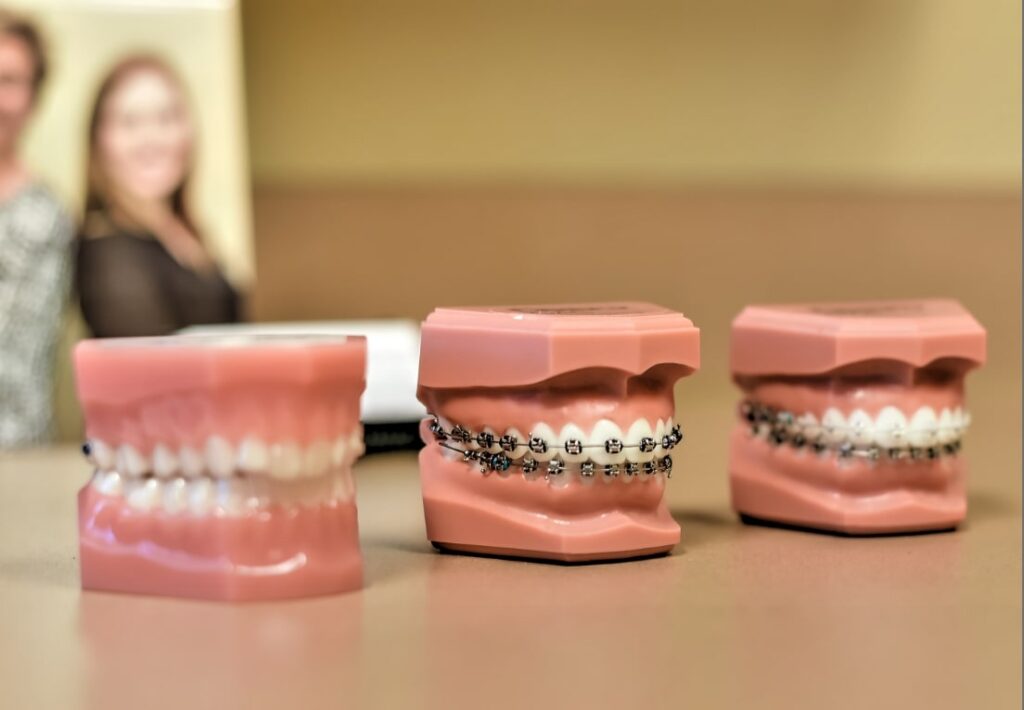Why Cumming Invisalign is the Perfect Selection for a Discreet Orthodontic Service
Why Cumming Invisalign is the Perfect Selection for a Discreet Orthodontic Service
Blog Article
Comprehensive Overview to Orthodontics Treatments for Correcting Dental Imbalances
Understanding the details of each procedure, including their devices, advantages, and potential downsides, is essential in making notified decisions regarding one's orthodontic treatment. As we browse through the extensive guide to orthodontic procedures for fixing dental imbalances, the elaborate information of each approach will unfold, losing light on the path towards a unified and useful oral positioning.
Orthodontic Procedures Introduction

In enhancement to clear aligners and conventional braces, orthodontists may likewise advise various other interventions like headwear, palatal expanders, or retainers to deal with specific placement issues (braces). These procedures are customized to each person's special requirements and might involve a combination of therapies to attain the wanted outcomes. Normal changes and tracking are important components of orthodontic therapy to ensure progress gets on track and to make any necessary adjustments in the process. By going through orthodontic procedures, patients can not only accomplish a straighter grin however additionally improve their total oral wellness and function.
Conventional Braces: Exactly How They Work
When thinking about orthodontic treatments for dental imbalances, standard braces stand apart as a time-tested approach for dealing with teeth positioning. Conventional braces are composed of braces, wires, and bands that function together to apply continuous pressure on the teeth, progressively relocating them right into the preferred placement. The braces are affixed to the teeth making use of a special adhesive, and the wires are threaded with the braces. By readjusting the stress of the wires, orthodontists can regulate the direction and pressure used to each tooth, leading them into proper alignment gradually.
As pressure is used to the teeth through the braces, the bone surrounding the teeth is reshaped to support the brand-new tooth settings. Clients will require routine changes at the orthodontist's workplace to make certain the braces proceed to apply the right stress for reliable teeth activity.
Invisible Aligners: Disadvantages and pros
Unseen aligners use a discreet and hassle-free choice to traditional dental braces for dealing with dental imbalances. These clear, customized trays are basically invisible when worn, making them an enticing option for people seeking an extra cosmetically pleasing orthodontic therapy. One of the key advantages of invisible aligners is their removability, permitting simpler upkeep of oral health compared to typical dental braces. People can remove the aligners before eating or brushing their teeth, minimizing the danger of food obtaining embeded the appliance and simplifying the cleaning process.

Surgical Orthodontic Options
Surgical interventions in orthodontics present sensible choices for addressing intricate oral misalignments that might not be properly settled through traditional orthodontic treatments. While typical braces and invisible aligners can fix several orthodontic issues, certain situations need surgical treatment to achieve ideal results. Surgical orthodontic alternatives are commonly advised for extreme malocclusions, considerable jaw inconsistencies, and cases where the underlying bone structure needs adjustment to accomplish correct placement.
One typical surgical orthodontic treatment is orthognathic surgery, which entails repositioning the jaws to remedy functional problems such as problem speaking or chewing. This surgery is often done in partnership with an orthodontist who helps line Extra resources up the teeth prior to and after the treatment. Surgical orthodontics might additionally involve procedures to expose influenced teeth, get rid of excess periodontal cells, or reshape the jawbone to develop a more unified facial profile.
Before considering medical orthodontic options, people undergo a thorough assessment to identify the necessity and potential benefits of such treatments. aligners. While surgical treatment may appear overwhelming, it can substantially enhance both the feature and looks of the smile in situations where standard orthodontic therapies fail
Retainers and Post-Treatment Treatment

Post-treatment care includes complying with the orthodontist's guidelines diligently. This may include appropriate dental hygiene techniques, attending follow-up visits, and wearing the retainers as prescribed. Failure to follow post-treatment treatment directions can cause relapse, where the teeth progressively relocate back towards their original positions. Consistent retainer wear, good oral health, and regular dental exams are essential for preserving the results attained through orthodontic surgical treatment and making certain the lasting stability of the dealt with oral positioning.
Verdict
In verdict, orthodontic procedures supply different alternatives for dealing with dental imbalances. Surgical orthodontic choices are available for extra extreme imbalances. Overall, orthodontic treatments can efficiently boost dental health and visual appearance.
As we navigate with the extensive overview to orthodontic procedures for fixing oral misalignments, the intricate details of each technique will unfold, losing light on the course towards a functional and harmonious dental placement. - cumming braces
One of the most common orthodontic therapies is the usage of braces, which consist of steel braces and cords that apply mild stress to progressively Click This Link shift teeth into the wanted setting.When thinking about orthodontic therapies for oral imbalances, standard dental braces stand out as a tried and true method for remedying teeth positioning. Furthermore, undetectable aligners might not be appropriate for intricate orthodontic issues that call for even more considerable teeth movement, as they are commonly advised for moderate to moderate situations. Retainers are personalized orthodontic devices designed to hold teeth in their corrected placements after the completion of orthodontic treatment.
Report this page